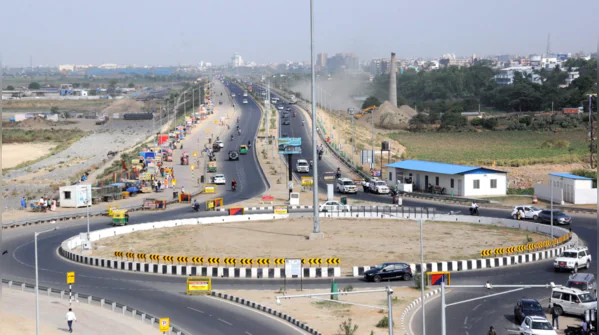
Loknayak Ganga Path—commonly known as “Patna Marine Drive”—is a landmark infrastructure project along the banks of the Ganges in Patna, Bihar. This 20.5km-long, four-lane expressway is not just a new road but a symbol of Patna’s urban transformation, promising to ease traffic woes, spark economic development, and usher in a new era of riverfront living for millions of residents.
Vision and Genesis
Conceived to address the chronic traffic congestion between East and West Patna, the project was envisioned as Bihar’s answer to Mumbai’s iconic Marine Drive. The plan was formally approved in August 2007, with groundbreaking initiated by Chief Minister Nitish Kumar on 11 October 2013. Unlike earlier times when the city’s traffic was concentrated on outdated routes like Ashok Rajpath, Loknayak Ganga Path offers a modern, high-speed arterial corridor hugging the Ganga’s northern bank.
Project Overview and Phasing
Design: Four-lane expressway (14m wide) with dedicated footpaths on both sides
Route: Digha (West Patna) to Deedarganj (East Patna), passing near key city landmarks and bridges
- Key Connections: Digha Rail Bridge, Mahatma Gandhi Setu, and under-construction Kacchi Dargah–Bidupur Bridge
Phased Development
The expressway’s construction was undertaken in phases for timely delivery and efficient integration into the city’s transport network.
- Phase I (Digha to Patna Medical College & Hospital): 6.5km; inaugurated 24 June 2022; constructed atop a 13m-high embankment for flood resilience.
Phase II (PMCH to Gai Ghat): 5km; inaugurated 14 August 2023; extended coverage to Gai Ghat, adding both at-grade and elevated stretches.
Phase III (Gai Ghat to Deedarganj): 9km; operational in two sub-stages: Gai Ghat to Kangan Ghat (July 2024), Kangan Ghat to Deedarganj (April 2025).
The elevated segment constitutes approximately 14km, while the remaining 6.5km is at ground level. Completion of these phases dramatically reduces the cross-town commute time and decongests arterial city roads.
Economic and Urban Impact
Patna Marine Drive has already started to reshape the city:
- Traffic Decongestion: The corridor provides a hassle-free, rapid-link between East and West Patna and diverts heavy traffic away from crowded city roads. Direct connections to major bridges mean that long-haul truck traffic and intercity vehicles can bypass the urban core.
Boost to Economy: By improving connectivity with the surrounding regions, the project opens up opportunities for commerce, tourism, and urban expansion—especially near newly accessible riverfront land.
Urban Renewal: Planners have envisioned a dynamic waterfront, reminiscent of global river cities, with a 4.5km esplanade and 20 traditional ghats restored or newly created, alongside four cultural centers. This not only preserves historic public spaces but also promotes tourism and local recreation.
Technological and Engineering Feats
This expressway stands out for its engineering amidst the challenges of riverbank construction:
- Flood Protection: The road is built several meters above the floodplain, with robust embankments to counter seasonal swelling of the Ganga.
Hybrid Alignment: By mixing elevated roads and at-grade sections, designers balanced cost, urban integration, and minimization of land acquisition concerns.
Modern Amenities: Footpaths, service lanes, public spaces, and direct linkages to arterial city roads and bridges have been incorporated for seamless public use.
Riverfront Extension and Future Plans
Buoyed by its success, the state government has approved ambitious plans to expand Loknayak Ganga Path further:
- Proposed Extensions: Extension eastward from Deedarganj to Mokama, and westward from Digha to Koilwar—potentially connecting Patna with other urban centers along the Ganga.
Budget and Scope: The expanded vision, which could stretch total length up to 70km, has an estimated budget of ₹7,000 crore. Seven major bridges will connect with this expanded corridor, integrating north and south Bihar like never before.
Timeline: With detailed project reports in the works, construction tenders will be initiated soon. The anticipated completion will help ease regional transport and make Patna a pivotal river city in eastern India.
Social and Cultural Significance
Loknayak Ganga Path has become more than just an expressway. Locals and tourists throng to the riverfront to enjoy panoramic views of Digha Setu and Mahatma Gandhi Setu, especially during festivals and evenings. The stretch is quickly emerging as a new cultural heart, with recreational spaces, morning walkers, and a vibrant street culture reminiscent of world-class river promenades.
Challenges and Resilience
Every megaproject faces hurdles—delays due to funding shortages, fluctuating investor interest, land acquisition struggles, and the immense challenge of building next to a dynamic river. When private investment lagged, the state government, with HUDCO support, stepped in to ensure continuous funding and completion.
A Model for Urban India
As Patna joins the league of Indian cities with world-class riverfronts, Loknayak Ganga Path stands as an example for other aspiring regions. The blend of transport utility, environmental resilience, and urban renewal illustrates how infrastructure can spur not just movement, but also quality of life and civic pride.
In future years, with further extensions and the maturation of public spaces, the Ganga Path will likely reshape Patna’s identity—for residents and visitors alike—as a city embracing its river, history, and future with open arms.
